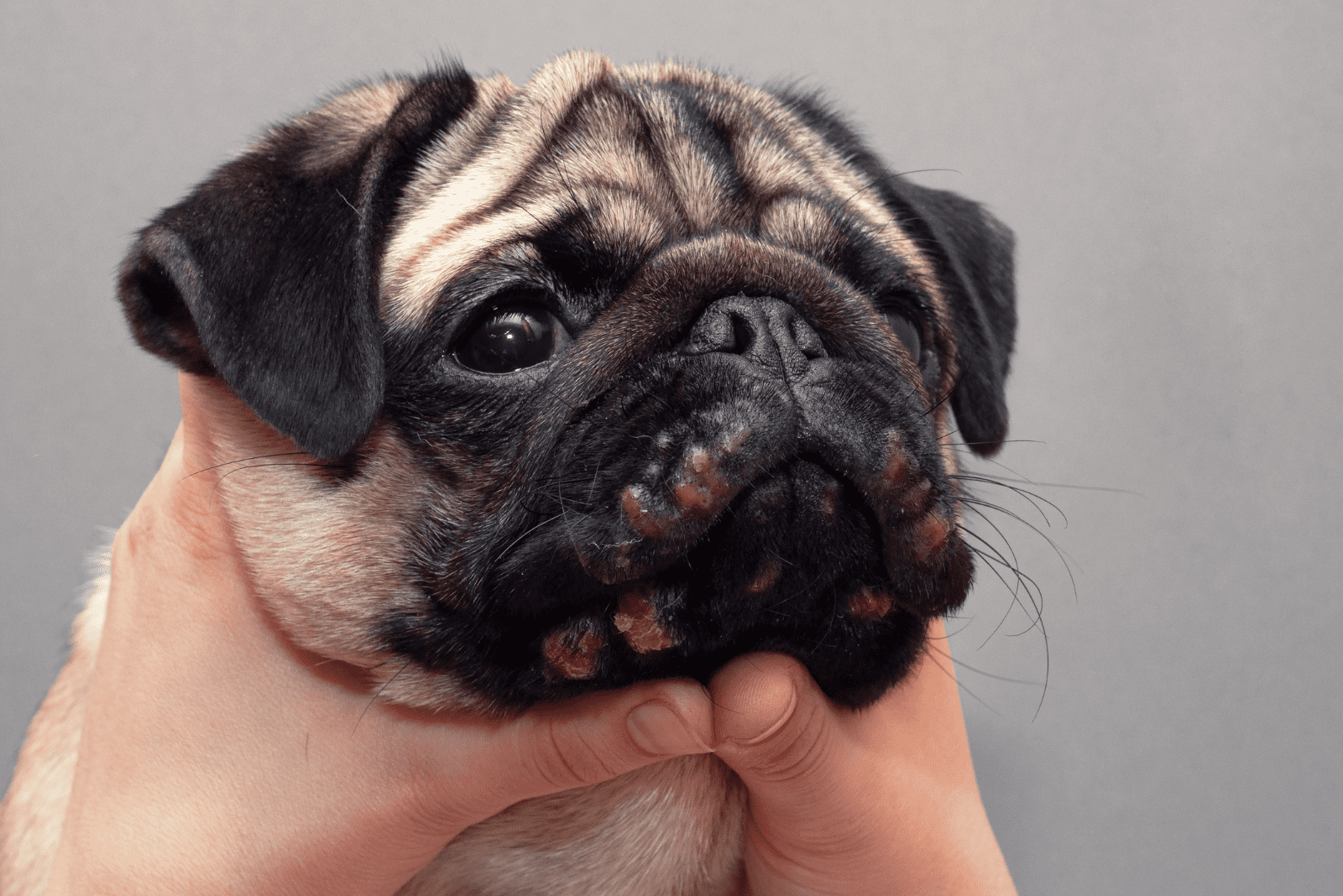The health of our furry friends is something we all hope we take good care of. Therefore, we try to feed them quality dog food, regularly take them for walks, provide them with mental stimulation, and generally provide them with quality living conditions.
Sometimes, dog owners can notice that something is going on with their dog based on their weird behavior. In some other cases, some unusual appearance on a part of the dog’s body tells us this by itself.
Since you’re here today, it’s obvious that it’s the crusty scabs around dog’s mouth. We believe this scene is not pretty to see. You probably got pretty scared right away, and are thinking about the worst scenarios.
It is true that this symptom can allude to various health conditions. Today, we will explain each of them. But first, we want to encourage you not to react with excessive fear and panic. The dog will recognize these emotions in you.
Crusty scabs can also indicate some benign conditions, so let’s see what the prognosis is, and whether it’s time to contact a veterinarian.
9 Causes Of Crusty Scabs Around Dog’s Mouth
Crusted scabs around dog’s mouth most often look like blisters or lumps. They are also called hot spots.
In some dogs, they are very easy to spot, while in some others, especially long-haired dogs, it is possible that the scabs have been present for a long time before we noticed them.
But, why do these flaky scabs appear on our dog’s skin?
There are different reasons that explain why these scabs appear on the dog’s skin. Let’s look at them and find out which one is the reason why your dog is having this skin condition.
By knowing this, you can make your next step of ensuring that your dog has healthy skin and good health in general.
1. Lack Of Water Intake
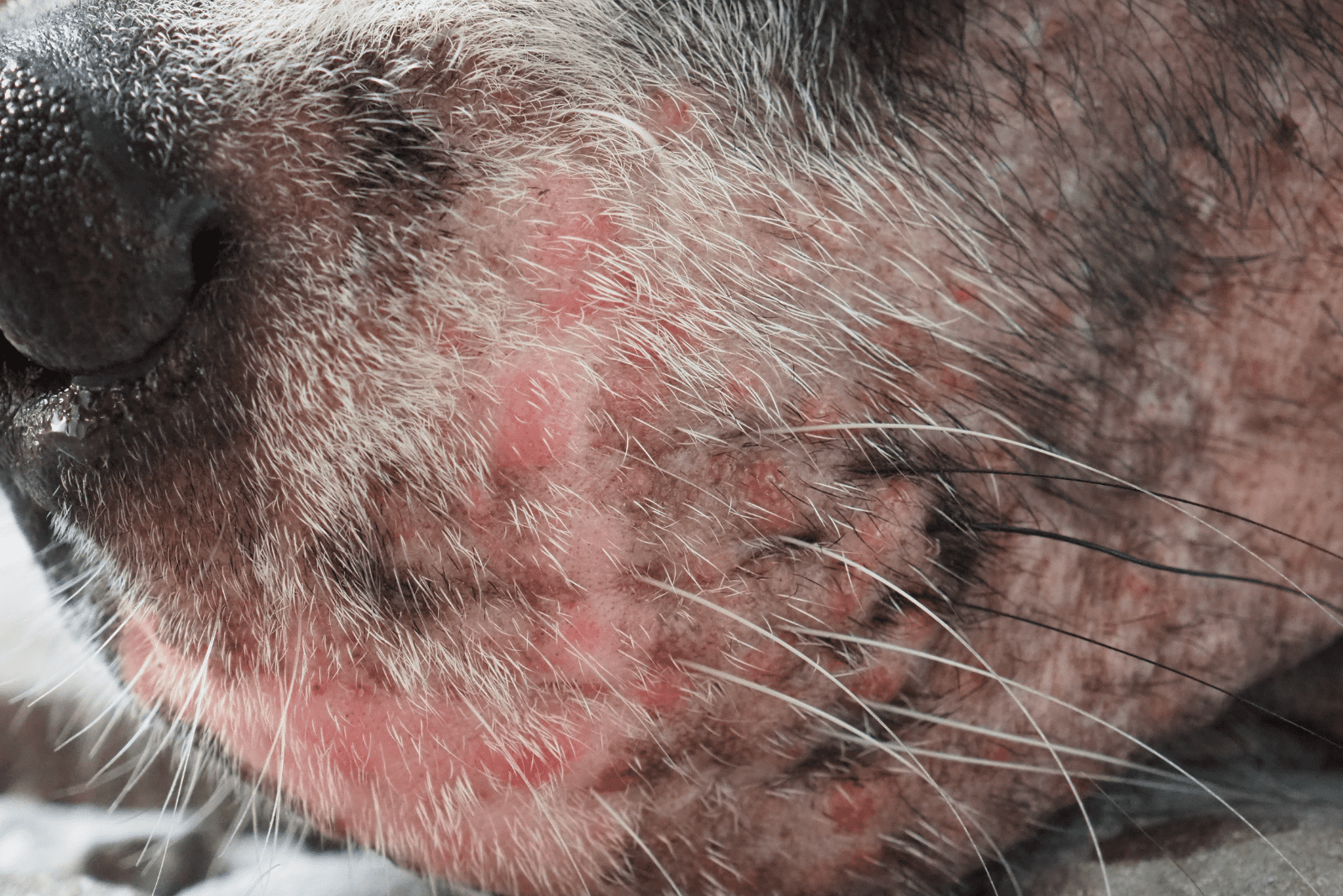
One of the causes of the appearance of crusty scabs and dry skin on your pet can be dehydration. So, your dog’s body lacks water. Water is very important for a dog’s health, and therefore, drinking water should always be available to a dog.
A lack of water can significantly impair a dog’s immune system.
In addition to hot spots, dehydration in a dog can also be detected with the help of the dog urine color chart.
Special attention should be paid to adequate water intake in dogs during warmer weather. Also, you need to pay even more attention to dehydration if you have an older dog or a very small puppy.
Dehydration in itself does not have to be a big problem, but if it is not noticed in time, it can be dangerous for the dog. It can also occur after the dog has had digestive problems, so monitor your dog’s behavior and react to the first symptoms of dehydration.
2. Allergic Reaction
Many dogs have problems with allergic reactions. Allergies in dogs can be caused by various allergens; for example, any chemical product in your home, such as a cleaning product.
Also, a dog can suffer from atopic dermatitis, which refers to an allergy to certain substances from the environment such as pollen, weeds, mites, or mold.
As a result of the allergy, the dog feels itchy all over its body, scratches and licks its paws, and scratches its face. In this way, the redness caused by the allergy turns into scabs.
Allergic reactions can also form crusty scabs on the dog’s back which increases the overall itchiness.
There is no specific anti-allergy medicine. It is important to find out which allergen is causing your dog’s skin problems. Some dogs will have an allergy only during a certain part of the year, while others will suffer from it throughout every season.
3. Canine Acne
This may sound strange to you, but just like humans, dogs can get acne (or pimples)! Some dog breeds are more prone to this skin problem, including French and English Bulldogs, American Staffordshire Terriers, Dobermans, and Boxers.
In general, acne is more common in short-haired dogs.
Acne in dogs usually appears between five and eight months of age.
The most common symptoms of acne in dogs are red bumps, painful lesions, and swelling. You will probably notice the dog trying to rub the infected area against the wall or the floor.
Why does this skin condition occur in dogs? It is assumed that it is possible that while drinking water and eating, dogs leave the area around their mouth wet. After that, the surrounding tissue becomes inflamed.
This condition in dogs is quite harmless, and it mostly represents an aesthetic problem. However, you should not touch the inflamed area.
Your veterinarian will advise you on the best way to treat this problem. In some cases, antibiotics will be needed.
Also, your vet will instruct you on the use of creams and shampoos that will treat this problem. You will probably be advised to treat your dog’s acne with benzoyl peroxide, which is a product that has strong antimicrobial properties, and that helps reduce inflammation on the skin.
Read Also: Is It Safe To Use Sudocrem For Dogs? All Benefits & Threats
4. Problems With Hormones
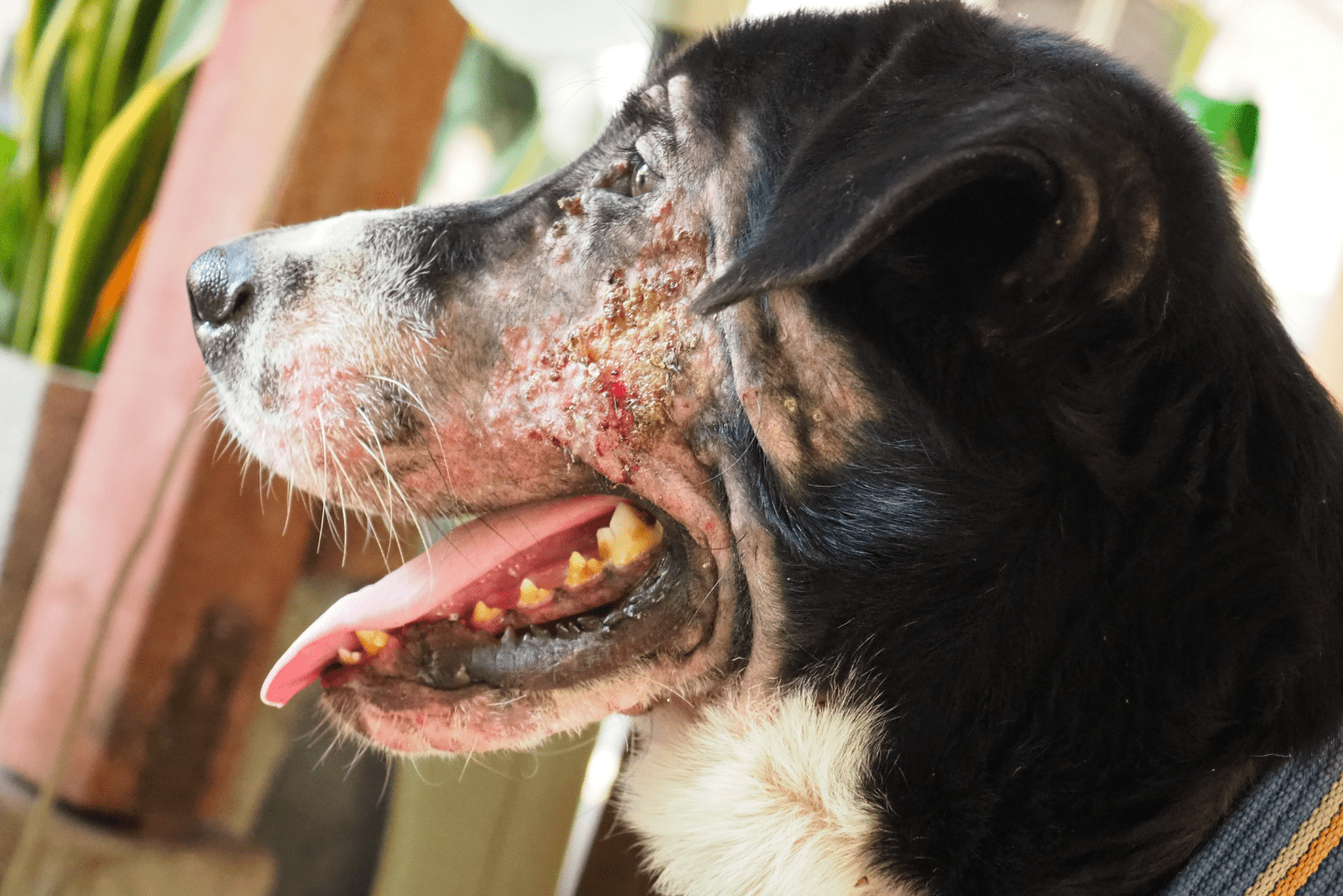
Crusty scabs around a dog’s mouth may indicate that the dog has a hormone imbalance. In addition to scabies, some other symptoms might occur such as hair loss, lethargy, and weight loss. Also, you could notice that your puppy pees a lot and drinks more water than usual.
So, hormones can affect the development of skin infections in dogs. There are a couple of health issues connected with hormone imbalance in dogs.
Cushing’s Disease
One of the most common hormonal diseases in dogs is Cushing’s disease. This disease affects the adrenal gland, and often occurs as a consequence of a tumor. Cushing’s disease occurs most often in older dogs.
Some dog breeds that are more likely to develop this health problem are Boxers, Beagles, Dachshunds, and Poodles.
The disease is not curable, but it can be controlled with appropriate drugs.
Hypothyroidism
Another common hormonal disorder in dogs is hypothyroidism, which affects the thyroid gland.
The disease occurs when the thyroid gland does not secrete enough hormones. This disease is more common in medium and large dogs, such as Dobermans and Golden Retrievers.
In addition to crusted scabs around the mouth, it is possible to notice symptoms such as obesity, lethargy, anemia, and hair loss.
The veterinarian advises adequate therapy to bring the dog’s hormones back to normal. In addition, skin infections caused by hypothyroidism are treated.
5. Lip Fold Dermatitis
Crusty scabs might also indicate a skin disease called lip fold dermatitis in your dog.
Besides lip fold dermatitis, this kind of dermatitis can also be found in other places on the dog’s body, such as the muzzle and tail. So, it is mostly about areas that are wrinkled and have excess skin.
Along with scabs, it is also possible that you will notice an unpleasant odor emanating from the affected area.
Your dog will probably have problems scratching and licking the skin fold around its mouth.
The dog’s lips will be swollen and painful to the touch. In some cases, this dermatitis will last a relatively short time, and the dog will soon recover. In some other severe cases, recovery will take much longer.
The most common cause of this dermatitis is the accumulation of moisture. Infected areas should be smeared with cream or ointment as recommended by a veterinarian in order to reduce pain and itching. The area around the dog’s lips should always be dry and clean.
6. Lip Fold Pyoderma
Crusty scabs on your dog might also indicate that he is struggling with a bacterial skin infection called lip fold pyoderma.
Some of the signs of this skin condition are scabs, dry skin, itching, and hair loss. Some of the possible causes of pyoderma are a weakened immune system and the dog’s skin being too exposed to moisture. Spaniel dog breeds are one of the dogs that are likely to develop lip fold pyoderma.
In some cases, pyoderma might occur as a consequence of canine dermatitis.
Treatment for this skin condition includes antibiotics. Also, veterinarians will usually suggest shampoos or sprays that dog owners should use on their dogs, usually once per week. Furthermore, it is crucial to keep the infected area dry and clean.
7. Fungal Infections
A dog gets a fungal infection through direct contact with another sick animal. In addition, a fungal infection can be acquired by touching any object in an environment on which there are fungi.
The most common fungal disease in dogs is caused by ringworm. A ringworm infection is not supposed to be too painful for dogs, but you will most likely notice symptoms, such as itchy skin.
Fungal infections are more common in younger dogs as well as in dogs with impaired health. One of the reasons why dogs get fungal infections could be if they spend a lot of time in damp and dark indoor spaces.
Treatment usually involves the use of antifungal drugs. During the treatment, it is important that the dog is isolated, that the area in which it stays is disinfected, and that the dog is placed in an area where sunlight is present.
8. Parasitic Infections
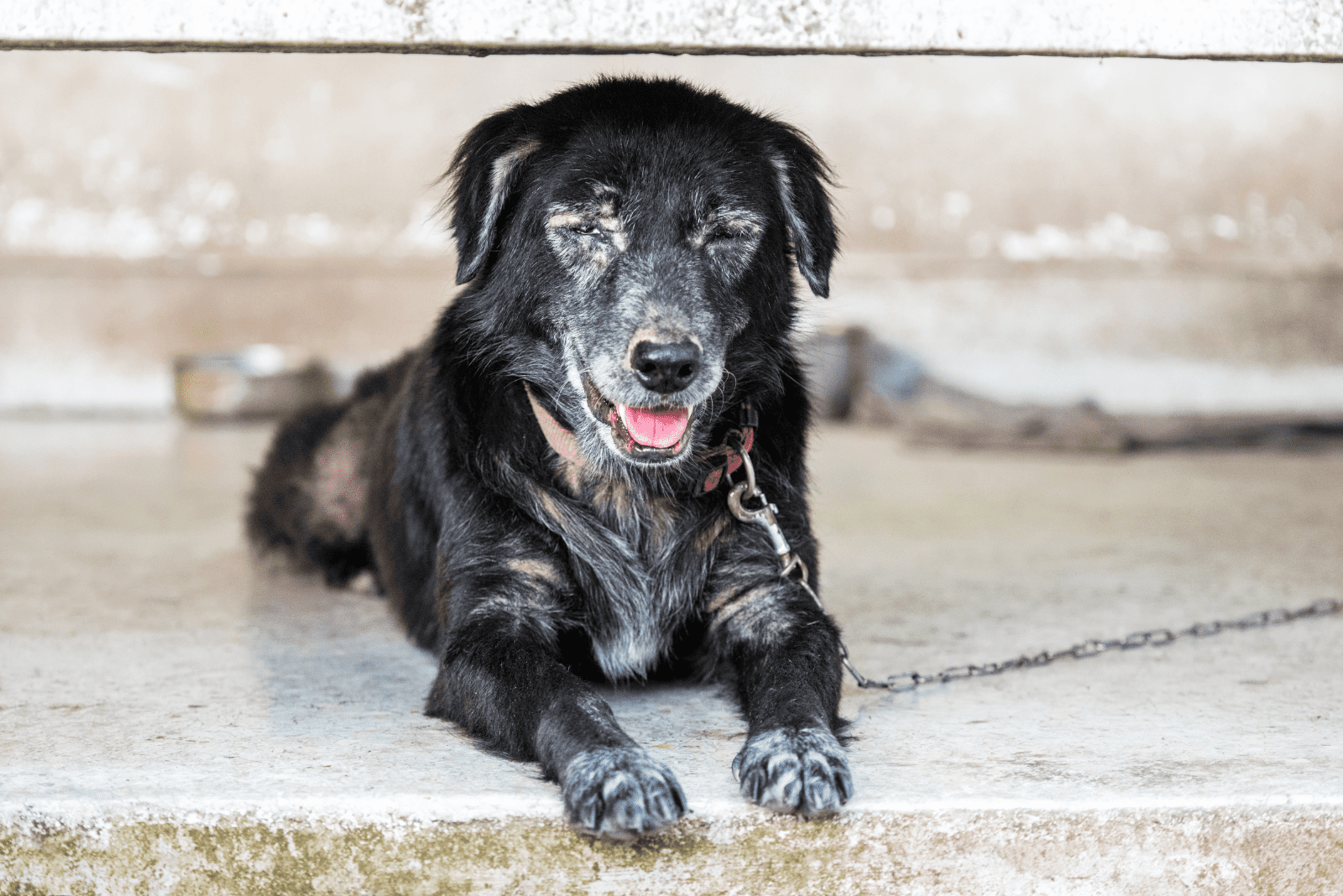
Your dog probably loves lying in the sun, especially if that means lying on the grass. But, do you know what kind of parasites are lurking here? Well, all kinds, especially mites, ticks, and fleas!
Parasitic infections in dogs can be caused either by parasites that are inside the body or by those that are on the dog’s skin.
Crusty skin, along with hair loss, are some of the symptoms that occur if it is a parasitic infection. These infections are usually not too dangerous, but they can be tiring, and can interfere with your dog’s daily routine.
Therefore, if you suspect the presence of a parasitic infection in your dog, it is best to immediately consult a veterinarian who will determine the exact parasite and advise you on further treatment.
9. Bacterial Infections
The appearance of red bumps or scabs around your dog’s mouth can also indicate a bacterial infection.
Bacterial infection in dogs often occurs as a result of folliculitis – that is, inflammation of the hair follicles.
There may also be pus formation at the infected site, which causes the formation of scabs. Folliculitis can occur as a result of various conditions such as poor hygiene, an inadequate dog diet, the dog spending too much time in damp areas, or due to mange, fleas, or any other insect bite.
In some cases, bacterial infections in dogs go away on their own without any treatment. However, these conditions often return, so it is always best to seek the help of a veterinarian.
We have one more important thing to mention here.
We can bet that your dog loves to lick you. Your face, your hand, your leg – they are all equally tasty for him! It is good to be careful here, especially if you have small children. We know our dogs do this as a sign of affection, but a dog’s mouth is full of bacteria, just like humans.
So, even more when you know that your dog might be having a bacterial infection, you should not let him lick your face.
What Are The Symptoms Of Scabs Around My Dog’s Mouth?
We found out what the main causes of the appearance of crusty scabs around a dog’s lips are, but how can you be sure that it is exactly this? What exactly are the symptoms of crusty scabs?
They are as follows:
• Itchiness
• Soreness
• Redness
• Hair loss
• Insect bites
• Unpleasant odor
• Dry lips
• Crusty spots on dog lips, and around dog lips
• Bleeding
Depending on the cause of crusty scabs in your dog, some dogs might have additional symptoms. This usually means some behavioral changes like lack of energy, lethargy, refusing to walk, refusing to eat, and weight loss.
How Do I Treat Crusty Scabs On My Dog? 6 Ways
Treatment of crusted scabs around a dog’s mouth will, of course, depend on the underlying cause behind this phenomenon in your dog.
Of course, the treatment cannot be the same if it is acne, a parasitic infection, or dehydration.
So, the first thing that all pet owners should do is take all the symptoms into account and monitor your dog’s behavior. This can also be quite difficult to achieve since almost all causes of crusty scabs have relatively similar symptoms, such as itching and irritated skin.
In some cases, only a skin biopsy can tell us what is the cause of crusty scabs around a dog’s mouth.
We can conclude that our veterinarians will give us the best answer and help. However, there are some things you can do yourself at home to keep your dog’s skin healthy.
1. Provide your Dog With A Balanced Diet
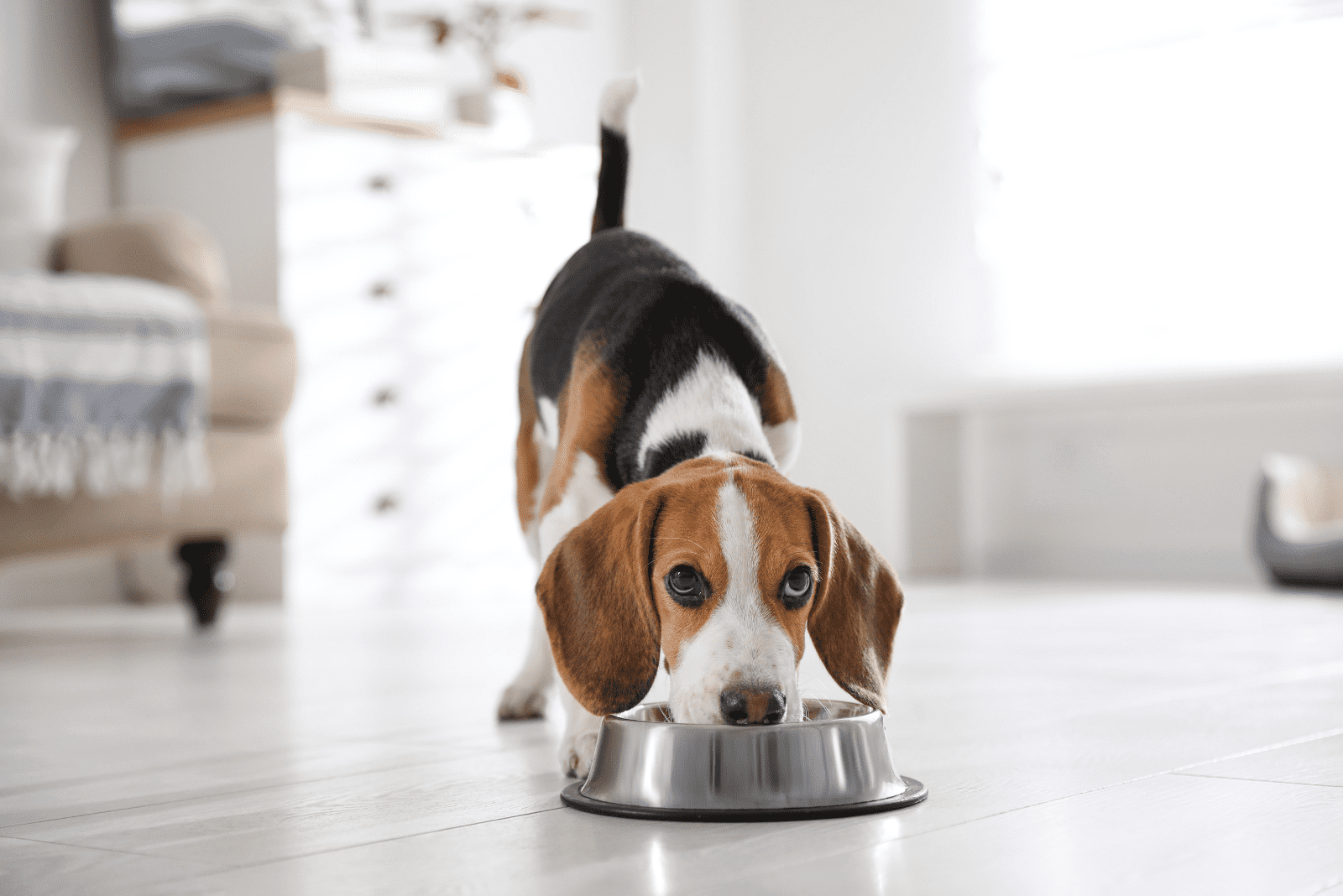
Just as water intake is extremely important for your dog’s skin and general health, choosing the right diet is just as important.
Nutrition significantly affects the health of a dog and its skin. Many dogs are more susceptible to skin diseases. One of them is the Pug. For more information, read our article on Pug skin problems.
Therefore, some dogs are more exposed to allergies, irritations, and skin redness. Also, some of them are prone to hair loss, which is by no means good for dogs since their fur protects them from the weather.
With proper nutrition, we can significantly help our pets keep their skin in good health. What does a proper diet for dogs even contain? Well, the combination of all nutrients that positively affect the health and energy of a dog.
In order for a dog’s skin to be healthy, it needs high-quality proteins. Therefore, your dog’s food should contain adequate amounts of fatty acids. Also, dog food should contain vitamins A, B, D, and zinc.
When choosing a suitable diet, it is important that you choose exactly the food that is the best one for a certain type of dog, its size, and its age. Also, it is important to pay attention to whether certain foods cause allergies in your pet.
In some cases, it is a good idea to add some supplements to your dog’s diet. This, of course, should be done after consulting a vet.
2. Grooming Your Dog Regularly
Grooming your dog regularly can have a significant impact on reducing the appearance of scabs around his mouth. This applies to regular brushing and bathing of dogs.
Of course, the frequency of these two actions will significantly depend on the type of dog you have. The frequency of bathing a Yorkie differs from, for example, the recommended frequency of bathing a German Shepherd.
If you need additional advice, you can find some interesting solutions in our article on the best shampoos for different types of dog coats.
In general, you should make sure to always bathe your pet with a suitable dog shampoo.
If you are wondering whether you can use Head & Shoulders shampoo on your dog when it has problems with dandruff, the answer is – yes, you can, but not regularly. Dog shampoos have special formulas that fully suit a dog’s sensitive skin.
Regular brushing is just as important.
Even if you have a dog that sheds relatively rarely, it still needs brushing. True, not as much as some dogs that are heavy shedders, but it is still necessary. By brushing, we remove dirt from the fur of our pets, and we can notice if there has been any change in their skin.
3. Applying Vitamin E Oil
Applying vitamin E oil to crusted scabs can significantly help your dog recover faster. In addition to scabies, vitamin E oil is helpful for itchy skin and dry skin.
Vitamin E is an ingredient that can be found on the labels of many dog shampoos.
This oil is good because it has the effect of reducing flaking of the skin and making your dog’s infected area return to its normal state as quickly as possible.
4. Applying Aloe Vera
Aloe Vera is a plant that is widely known for its healing and antibacterial properties. In addition to people using it, it can also be of help in treating skin problems in our furry friends!
Aloe Vera contains vitamins A, B, C, and E. At the same time, this plant has an anti-inflammatory effect, and it helps heal wounds, moisturizes the dog’s skin, and relieves itching. Also, aloe Vera can have a positive effect on the removal of bacteria.
With the use of this plant, the dog’s skin will recover faster and return to its natural state.
5. Applying Coconut Oil
Another natural remedy that can be your ally in trying to help your dog that is struggling with scabs is coconut oil. Coconut oil has anti-inflammatory and anti-fungal effects.
It is applied by massaging it directly on the dog’s skin areas that are infected.
Coconut oil will have a positive effect on the reduction of the unpleasant smell of the wound, and on the faster healing of the crusty scabs. Also, this oil is useful in fighting against parasites, and it will generally make the dog’s coat look better and healthier.
Even when the dog is completely healthy, coconut oil can be used as a dietary supplement. The oil has a positive effect both on the dog’s appetite and on maintaining the optimal body weight.
6. Applying Honey
We all know how useful honey is. But, did you know that with the help of honey, you can help your dog that is struggling with crusty scabs?
Honey is a natural anti-allergen.
If you apply it to your dog’s crusted scabs, it will eliminate the infection and reduce pain and inflammation. Also, with the help of honey, new skin layers will form faster.
Honey gives the dog’s skin enough moisture to regenerate, and at the same time, it isolates the infected area from the healthy area. Honey should be applied to the dog’s skin as thickly as possible. Bandages may or may not be applied.
It is important to make sure that the dog does not lick the wound that you have smeared with honey, at least for the first few minutes until the honey is absorbed into the skin. Honey can be applied to the wound up to several times a day.
How Do Vets Treat Crusty Scabs In Dogs?
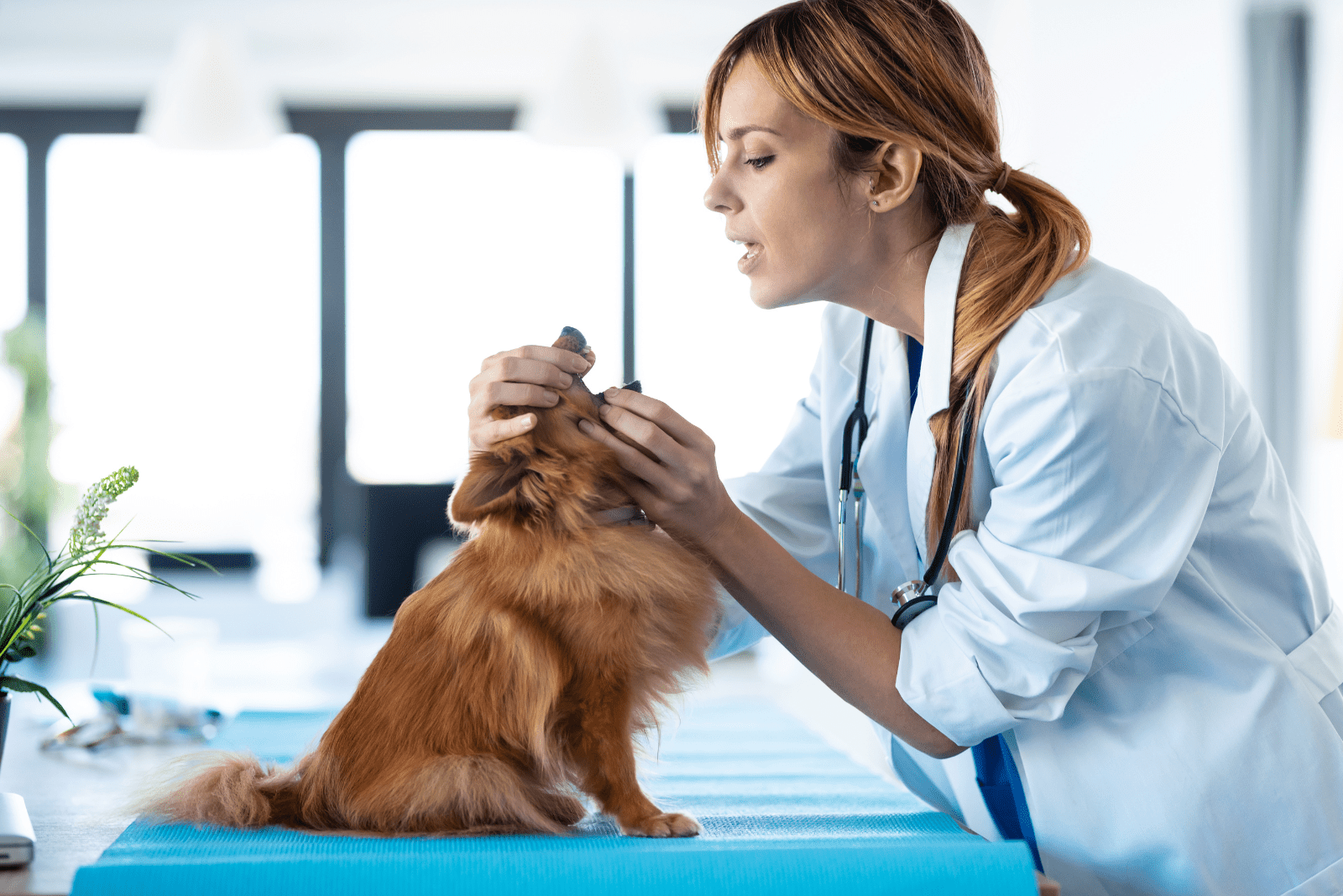
After you go to the vet and explain to him that your dog has crusty scabs around its mouth, or other symptoms (if you have noticed them), a detailed examination will follow.
After determining exactly what caused the crusted scabs, the vet will prescribe the appropriate treatment.
If the cause of the scabs is some kind of infection – parasitic, bacterial, or fungal – your vet will prescribe medications, and some products such as shampoos or sprays that you should use on your dog.
It might be necessary to use them over a longer period of time in order to make sure your dog is completely healed.
Furthermore, your vet might prescribe steroids, which will help put the inflamed areas under control, and which will decrease pain and itchiness in the affected areas.
Also, your dog could get recommendations for some ointments that will be helpful with dry skin, and will protect your dog’s skin. Products like these are good for keeping the skin hydrated.
We mentioned some ways you can help your dog by yourself at home. However, we strongly recommend that you always check with the veterinarian first before you use any product on your dog.
When there is a serious underlying cause behind the crusted scabs, the vet will recommend surgery, which will include the skin’s removal. This is the last option, and not a very likely one, so don’t worry in advance!
Final Words
Crusty scabs around dog’s mouth could imply different health conditions.
Maybe your dog is currently dehydrated or has developed an allergy to some substance in the environment. Perhaps behind this symptom is a more serious condition, such as a bacterial infection, or problems with hormone imbalance.
All of these conditions might be very unpleasant and painful for our dogs.
Also, the truth is that the symptoms are very similar for all of these conditions, so you may have trouble figuring out exactly which problem your dog is dealing with.
What you can do is make sure that your dog eats quality food and drinks enough water. Also, using natural remedies like coconut oil or Aloe Vera can do a lot of good for your dog that is struggling with crusted scabs.
In any case, we suggest you not to guess and wait for the symptoms to subside or worsen.
What you should always do as a responsible dog owner is contact your veterinarian. After a thorough examination, the vet will determine exactly what caused this skin problem in your dog, and how it needs to be treated.
Read Next:
• What To Do If You Find A Dried, Dead Tick On Your Dog
• Explaining Dog Behavior Changes After Vaccination In Detail
• 11 Reasons Why Dog Keeps Licking Lips & Tips How You Can Help
